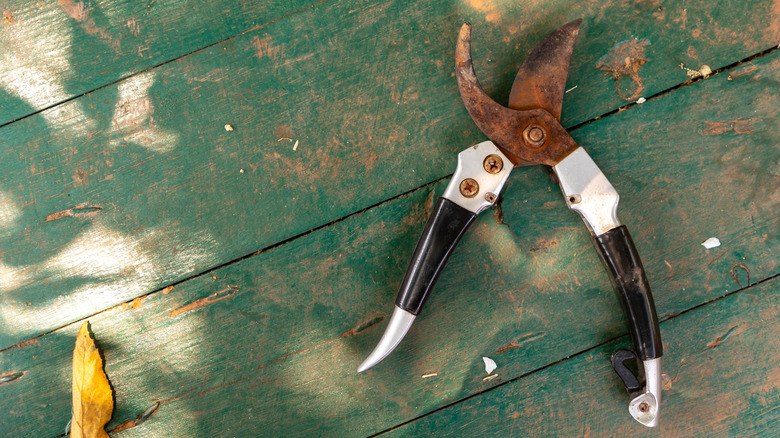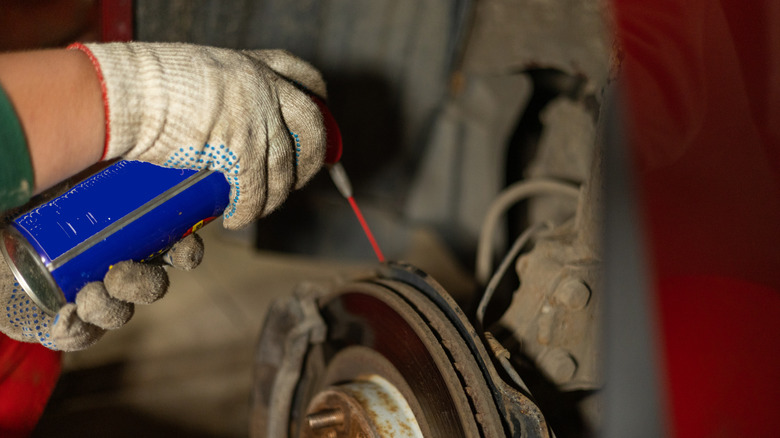Restore Old Garden Tools With The Help Of WD-40
We may receive a commission on purchases made from links.
If you accidentally leave your landscaping tools outside in the rain and they grow a layer of rust, you might be tempted to throw them out. Before you do, try an easy hack with WD-40 to scrub off rust and bring them back to life again. Rust, that reaction of moisture and air with iron, can be unsightly. That reddish brown residue also can be harmful in more ways than one. Not only can rusty shears become stiffer and harder to use, potentially hurting our hands or joints, they can also damage plants as well. Rusty blades are often dull. They'll tear the plant instead of making clean cuts. Rusty tools can also harbor germs, spreading bacterial or fungal disease in the garden.
Rust makes our tools unstable, too, meaning they might break more frequently and potentially cause us injury by increasing the risks of accidents. And nobody wants that. Many of us don't keep our gardening tools as clean or rust free as they should be, but worry not. You can bring your tools back to almost-new glory with a little bit of elbow grease and some lubricant. If you're looking for the right way to easily clean and sharpen gardening shears, then grab a can of WD-40, bleach, a wire brush, and maybe even sand paper if you have some handy, and let's get to work.
Help breathe new life into old tools in these easy steps
If you want to restore rusty tools, start by applying some regular WD-40 and then giving them a good scrubbing with your wire brush or steel pad. If your tool has moving parts, you might want to take it apart to make it easier to clean. Be careful not to scrub too hard, as any scratches could give rust a foothold again.
If rust is too stubborn to scrub off, you can try using sand paper, or soak it in WD-40 Specialist Rust Remover Soak, which can help dissolve rusty residue. Once the rust is removed, consider disinfecting your tools with a quick 30-second soak in a 10% bleach solution to kill off any bacteria or fungus lurking on your blade's edge. Dry the spade or edge thoroughly. Then, add on a coat of regular WD-40, or another protective rust-resistant barrier like silicon spray, to help prevent rust from forming in the first place.
Of course, rust prevention is always the best way to keep tools looking and performing at their best. Regular applications of WD-40 or mineral protectant are a good idea while cleaning your tools after every use. It's also a good idea to store your tools in a cool, dry place to help ensure they're protected from the elements. If you want to fight rust elsewhere, you can also use WD-40 to clean barbecue grills, too.

